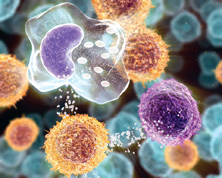Can we establish clinical biomarkers?

Photo: Clinical evaluation of biomarkers (Credit: Biochemistry at UWO)
Biomarkers are becoming more important to analyzing HD, where the ability to gauge one’s progression is becoming more critical in learning the processes involved. Some biomarkers which are being identified for HD, are also being cross referenced to other neurological diseases such as Alzheimer’s and Parkinson’s (23). Biomarkers must satisfy the following criteria (23):
- Easy to quantify in accessible tissue or biofluid.
- Not subject to wide variation in the general population if used as a diagnostic biomarker.
- Unaffected by unrelated conditions and co-morbid factors.
- Measurement is reliable and quick.
- Measurements are reproducible at a different time or in a different centre.
- The biomarker changes linearly (either negatively or positively) with disease progression.
- The biomarker changes in response to a disease modifying therapeutic intervention that closely correlates with established clinico-pathological parameters of the disease.
Trying to establish a linear relationship is difficult, as there are a myriad of other factors involved, but significant approaches have been made through the use of certain techniques, which is discussed later in this review.
Clinical endpoints are the most credible characteristics used to interpret the results of randomized clinical trials and reflect how a patient feels, functions, or survives, yet limited by virtue of self-objective assessments (29). The need to establish guidelines is essential to gauge the progress of future therapeutic interventions.
 Profiling of cytokine expression from the CNS into the blood may also serve as a biomarker, despite being broken down rapidly (26), and being diluted in plasma (22). However, experiments can be proposed to see whether intravenously injecting cytokines into mice with wildtype huntingtin, will lead to HD symptoms, which may establish whether miniscule changes in cytokine concentration over time can lead to neurological decline, and if so, establish a linear dosage relationship.
Profiling of cytokine expression from the CNS into the blood may also serve as a biomarker, despite being broken down rapidly (26), and being diluted in plasma (22). However, experiments can be proposed to see whether intravenously injecting cytokines into mice with wildtype huntingtin, will lead to HD symptoms, which may establish whether miniscule changes in cytokine concentration over time can lead to neurological decline, and if so, establish a linear dosage relationship.
Photo: Secretion of cytokines into extracellular environment (Credit: Nordic Biosite 2010)
